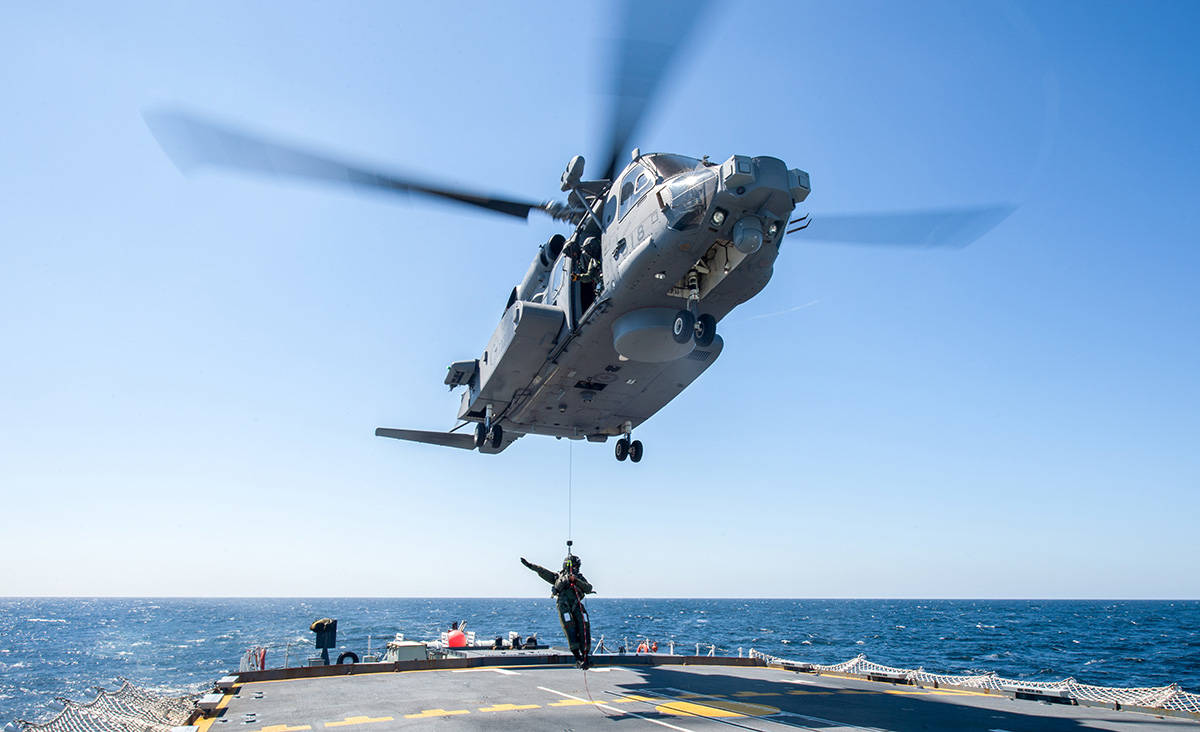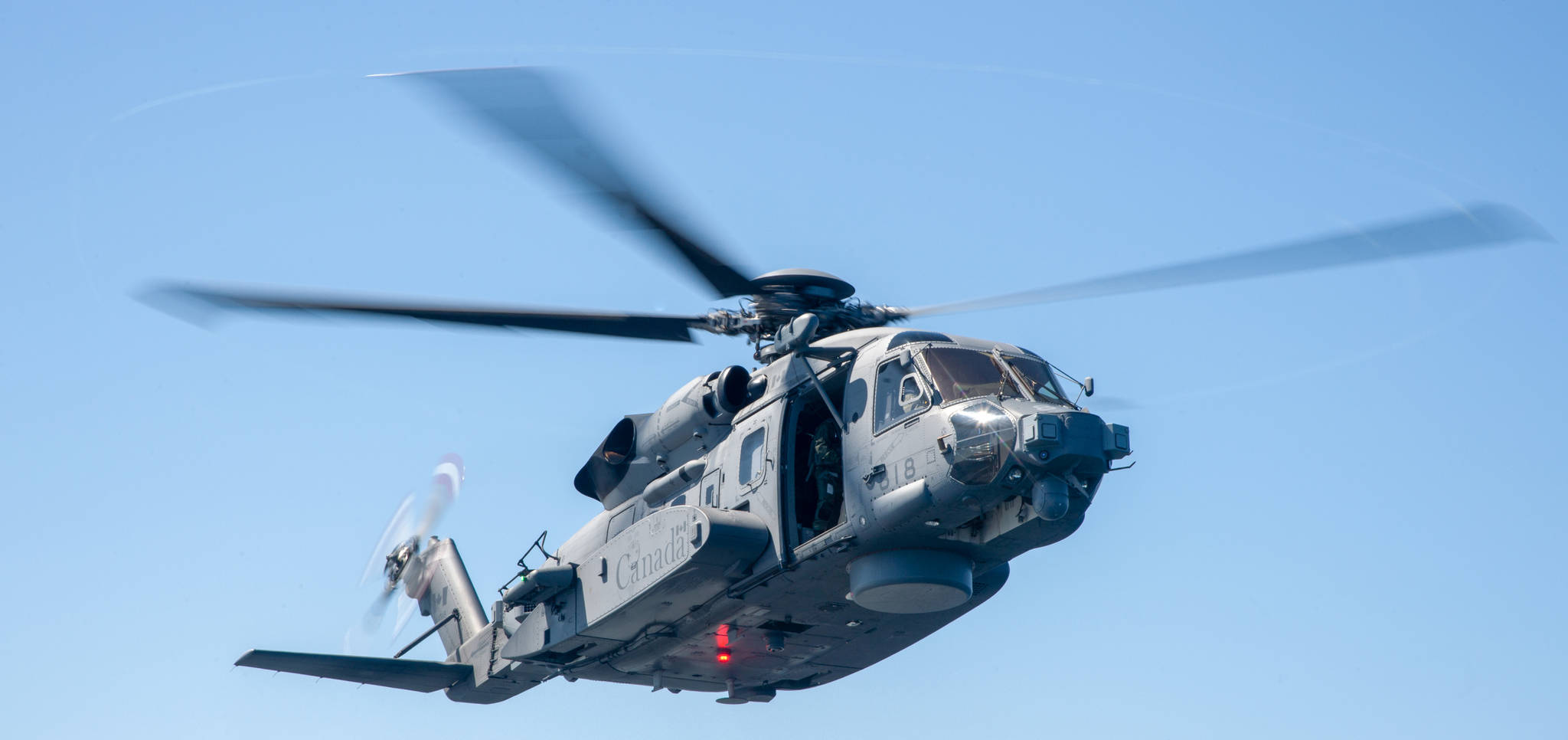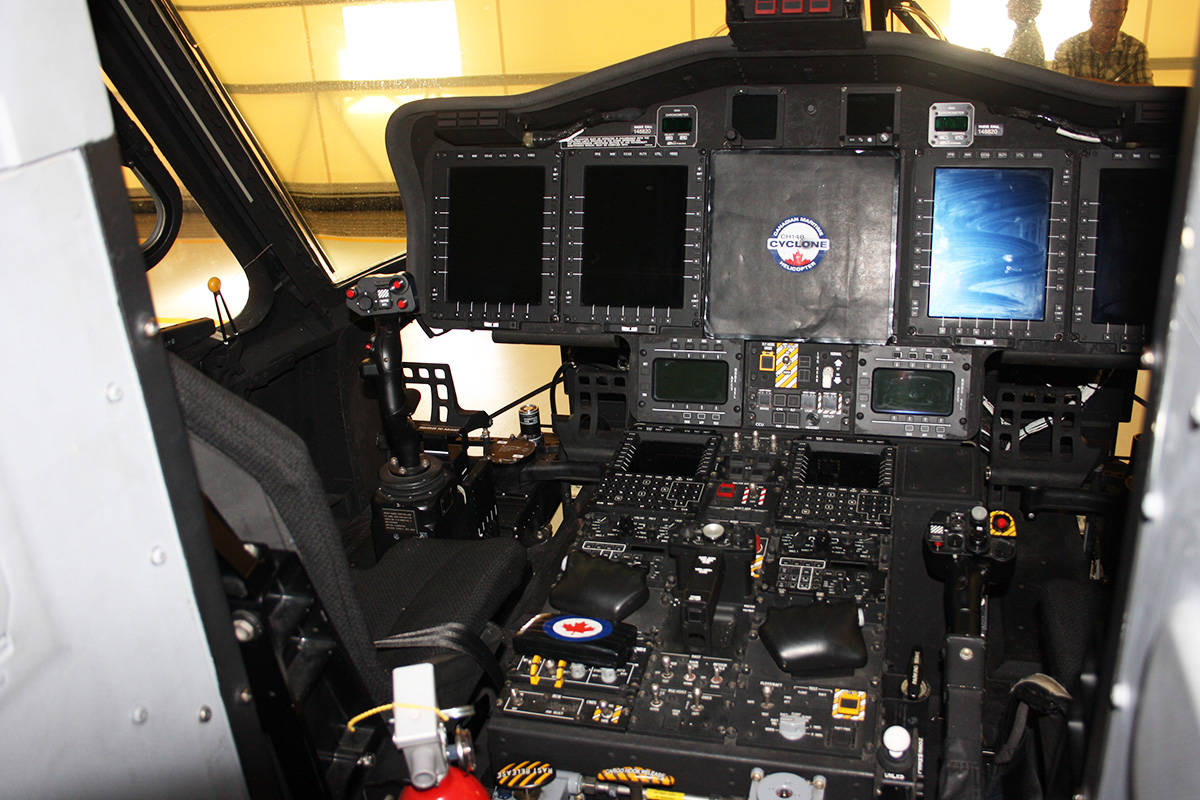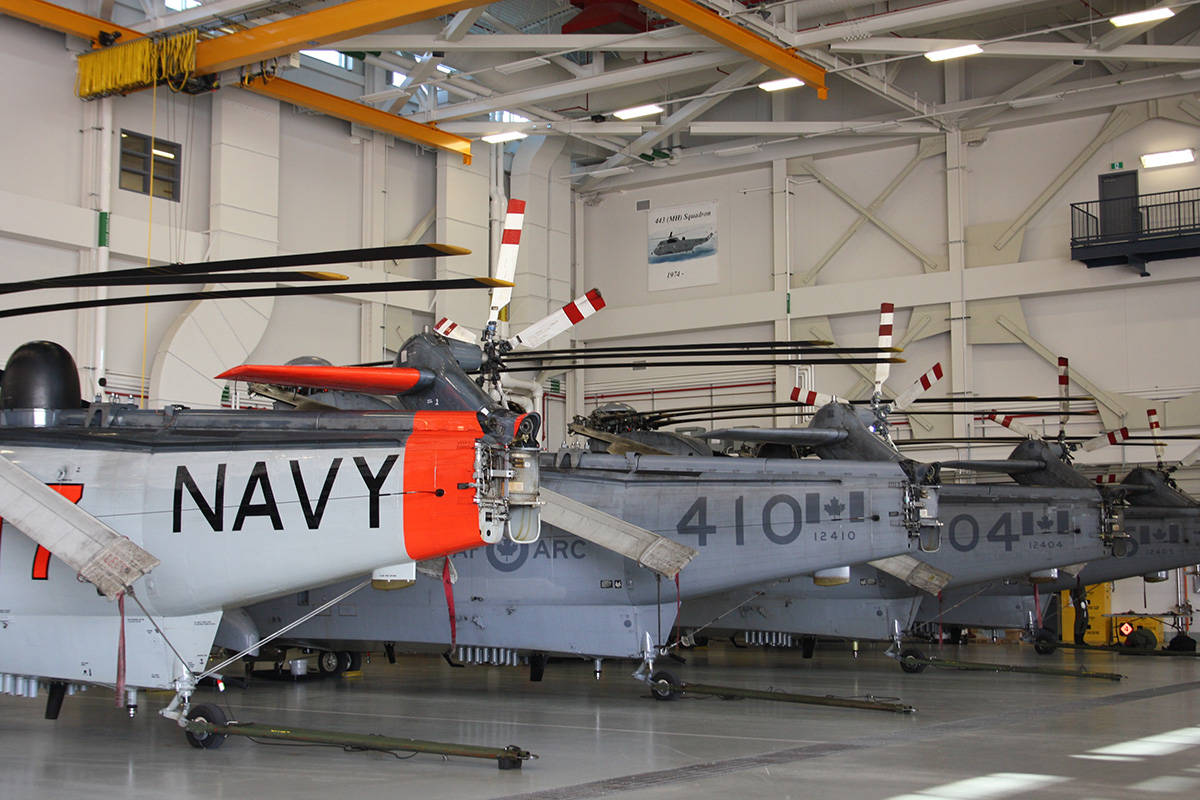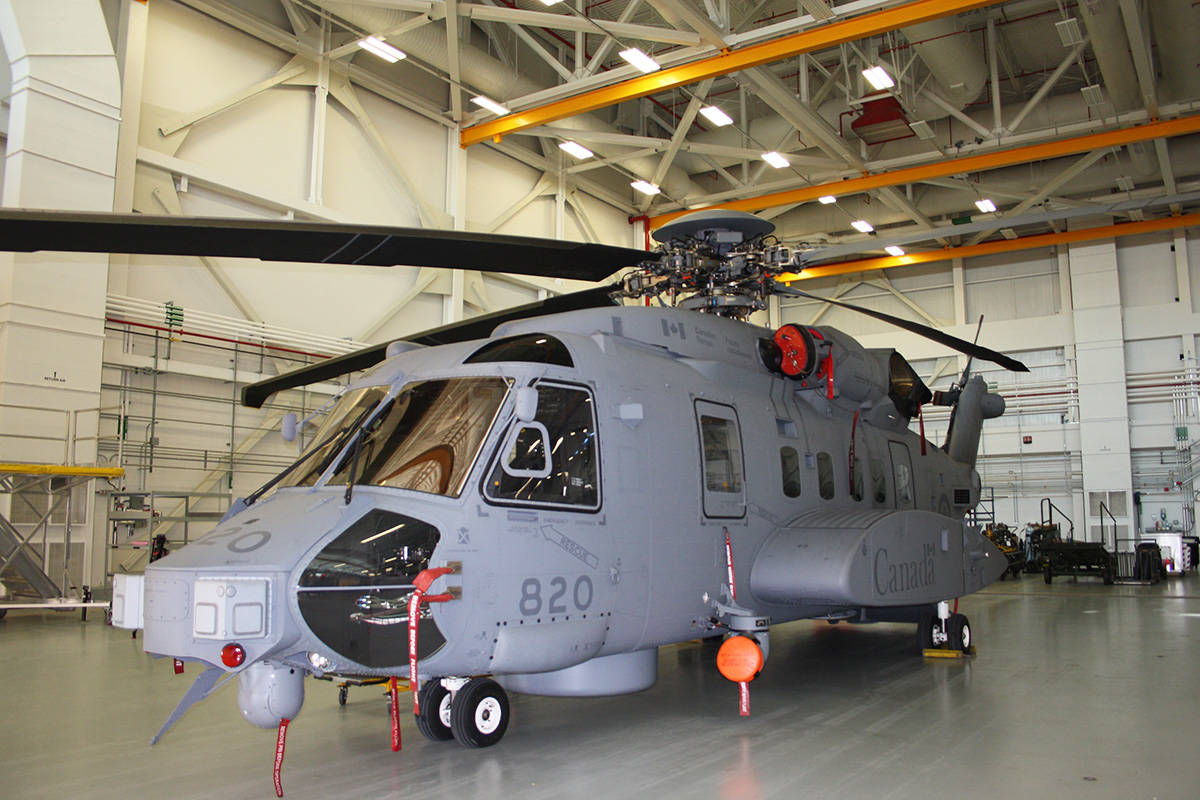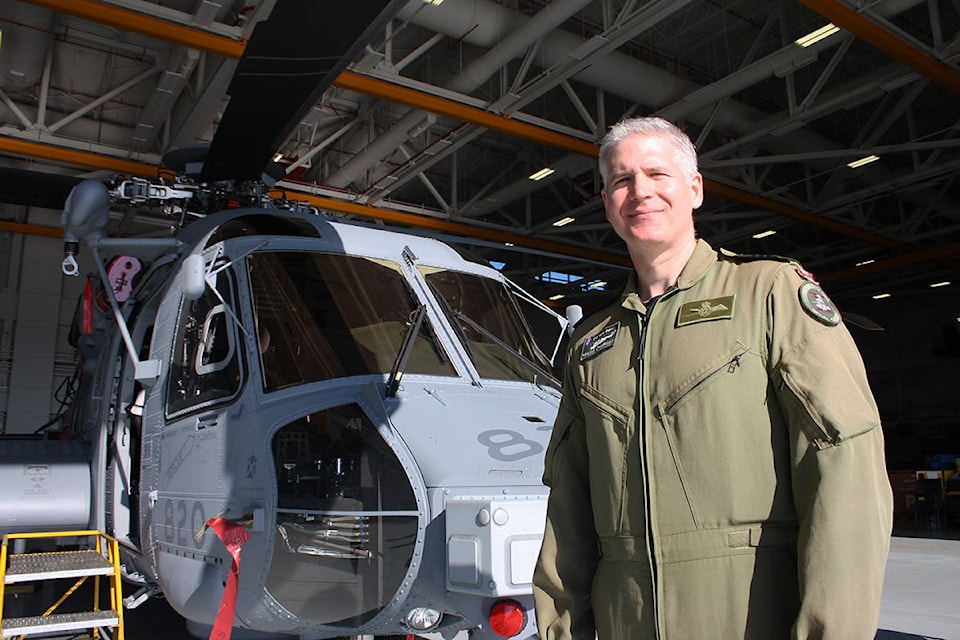It’s been a long road, with more than a few bumps along the way, but the first of the Royal Canadian Navy’s state-of-the-art CH-148 Cyclone helicopters has finally arrived at 443 Squadron in Patricia Bay.
The Cyclone is the first of what will eventually be nine of the aircraft at the base, with a second arriving by September and a third expected before year’s end. The remaining six helicopters will arrive after that and the full complement is expected to be in place by 2021.
The new aircraft will be replacing the CH-124 Sea King as Canada’s main ship-borne maritime helicopter, providing air support to the Royal Canadian Navy. This new fleet of aircraft is at the forefront of modern technology and one of the most capable maritime helicopters in the world.
“We’re very excited to have this aircraft here and now the work begins in training the flight and ground crews and getting them acquainted with the Cyclone,” said Lt. Col. Travis Chapman, the commanding officer of 443 Squadron.
RELATED: New helicopter hangar nearly done
“This aircraft has more advanced avionics suite, better radar systems and a greater capability to integrate with other forces.”
The Cyclone will serve a number of key roles, including sub-surface surveillance and control and utility and search and rescue missions.
It can conduct its operations day and night and in almost any weather conditions while maintaining a longer range and approximately 10 per cent faster air speed than the Sea King.
RELATED: Helicopter hangar began in 2011
“The CH-148 is far more advanced than the Sea King and, from a warfare perspective, it is generationally leaps ahead of its predecessor.
From utility to weight capacity and its ability to fulfill our missions–this aircraft is far superior,” said Chapman.
“It’s even still got that ‘new car smell’ which is sort of neat,” he added with a chuckle.
While the Cyclones will be operating out of a hanger at 433 Squadron for the time being, it’s expected that the first of the new helicopters will be deployed aboard ship in January of 2019. The first deployment will be to the HMCS Regina, although no details are currently available on the specifics of that ship’s mission at that time.
The remaining Sea King helicopters, the now geriatric workhorses of the Cold War that were originally deployed in 1963, will continue in use until January when some will go to museums and others placed for sale or simply scrapped.
For Sergeant Keegan Bulger, one of the technicians responsible for helicopter maintenance and repair, that transition may be bittersweet.
“The Sea King has always been there for us, and the maintenance program was well ingrained,” said Bulger.
“We’re learning that now for the Cyclone. We have people who are very good at the individual systems, but we’re now learning a more integrated approach to the maintenance program.”
Bulger explained that the new Cyclones are equipped with ‘millions’ of sensors that allow crews to pinpoint any problems and determine what equipment needs to be replaced or repaired.
“There’s still some need to be interpretive, but this takes a lot of the guesswork out of the situation.”
Chapman said that the Cyclone will be flown to Abbotsford on the weekend (Aug. 11-12) where it will be put on static display along with a couple of Sea Kings.
A Sea King will also do a flight demonstration as a sort of last hurrah for the long serving aircraft.
The original contract for the purchase of 28 Cyclone helicopters was signed in 2003, and the first of the aircraft were to arrive at 12 Wing Shearwater (Halifax) in 2008.
The multibillion-dollar contract hit a number of setbacks, including one last year when it was determined that sonar system affixed to the underside of the aircraft risked damage when deployed during on-ship use.
That concern, as well as a litany of others have all been addressed at this time, according to Chapman.
“This is a fantastic aircraft and we’re all very excited to get to work with it now.”
